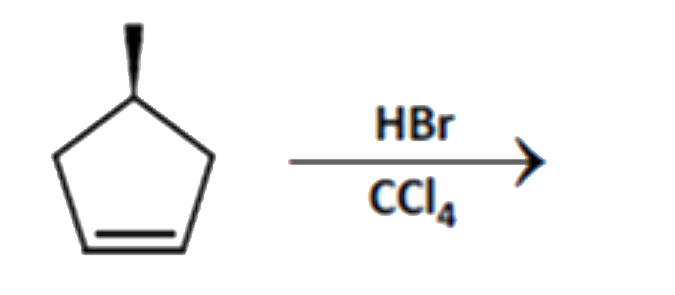The precursor Carbocation to the product in the following reaction is



Either of the two
None of these
The correct Answer is:A
Topper's Solved these Questions
- ALCOHOLS, PHENOLS AND ETHERSBOOK - DISHA PUBLICATIONCHAPTER - ALCOHOLS, PHENOLS AND ETHERSEXERCISE - Exercise - 1 : Concept Builder (Topicwise)(TOPIC 3 : Preparation and Properties of Phenols)
26 Videos
- ALCOHOLS, PHENOLS AND ETHERSBOOK - DISHA PUBLICATIONCHAPTER - ALCOHOLS, PHENOLS AND ETHERSEXERCISE - Exercise - 2 : Concept Applicator)
28 Videos
- ALCOHOLS, PHENOLS AND ETHERSBOOK - DISHA PUBLICATIONCHAPTER - ALCOHOLS, PHENOLS AND ETHERSEXERCISE - Exercise - 1 : Concept Builder (Topicwise)(TOPIC 1 : General Characteristics of Alcohols, Phenols and Ethers)
8 Videos
- ALDEHYDES, KETONES AND CARBOXYLIC ACIDSBOOK - DISHA PUBLICATIONCHAPTER - ALDEHYDES, KETONES AND CARBOXYLIC ACIDSEXERCISE - Exercise - 2 : Concept Applicator
27 Videos
Similar Questions
Knowledge Check
The end product of the following reaction is :
 Product :Aα,β−dike→≠Bα−hydr⊗yacC1,2-doilDbeta-hydroxy acid
Product :Aα,β−dike→≠Bα−hydr⊗yacC1,2-doilDbeta-hydroxy acidThe reaction shown below goes through classical carbocation What is the major product of this reaction
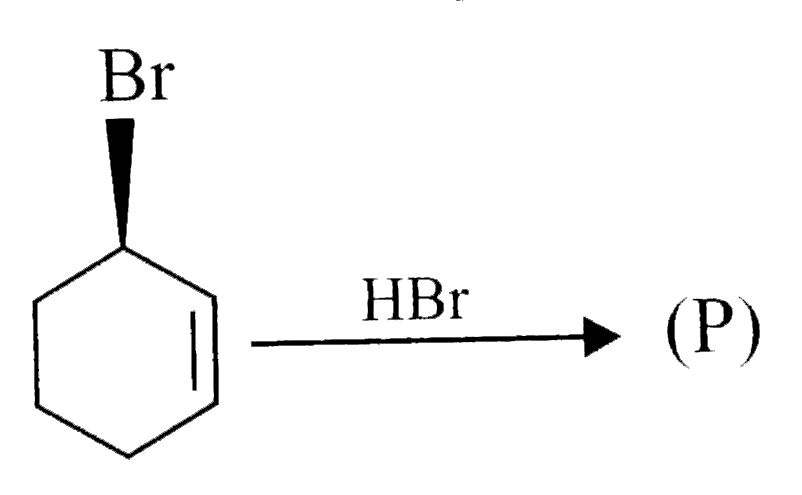 .Atrans-1,3-dibromocyclohexaneBcise-1,3-dibromocyclohexaneCcise-1,2-dibromocyclohexaneDcise-1,2-dibromocyclohexane
.Atrans-1,3-dibromocyclohexaneBcise-1,3-dibromocyclohexaneCcise-1,2-dibromocyclohexaneDcise-1,2-dibromocyclohexaneSurprisingly, the reaction shown below goes through classical carbocation. What is the major product of this reaction ?
 Atrans-1, 3-dibromocyclohexaneBcis-1, 3-dibromocyclohexaneCtrans-1, 2-dibromocyclohexaneDcis-1, 2-dibromocyclohexane
Atrans-1, 3-dibromocyclohexaneBcis-1, 3-dibromocyclohexaneCtrans-1, 2-dibromocyclohexaneDcis-1, 2-dibromocyclohexane
The following transfonnation involves a carbocation rearrangement. The carbocation is generated by protonation of the hydroxyl group, followed by the loss of water. Which bond has to migrate in the carbocation to yield the product indicated (after the deprotonation)
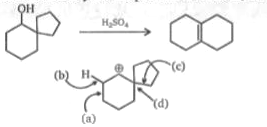
View SolutionCarbocation is a reaction intermediate in which of the following reactions?
View SolutionSurprisingly, the reaction shown below goes through classical carbocation. What is the major product of this reaction?
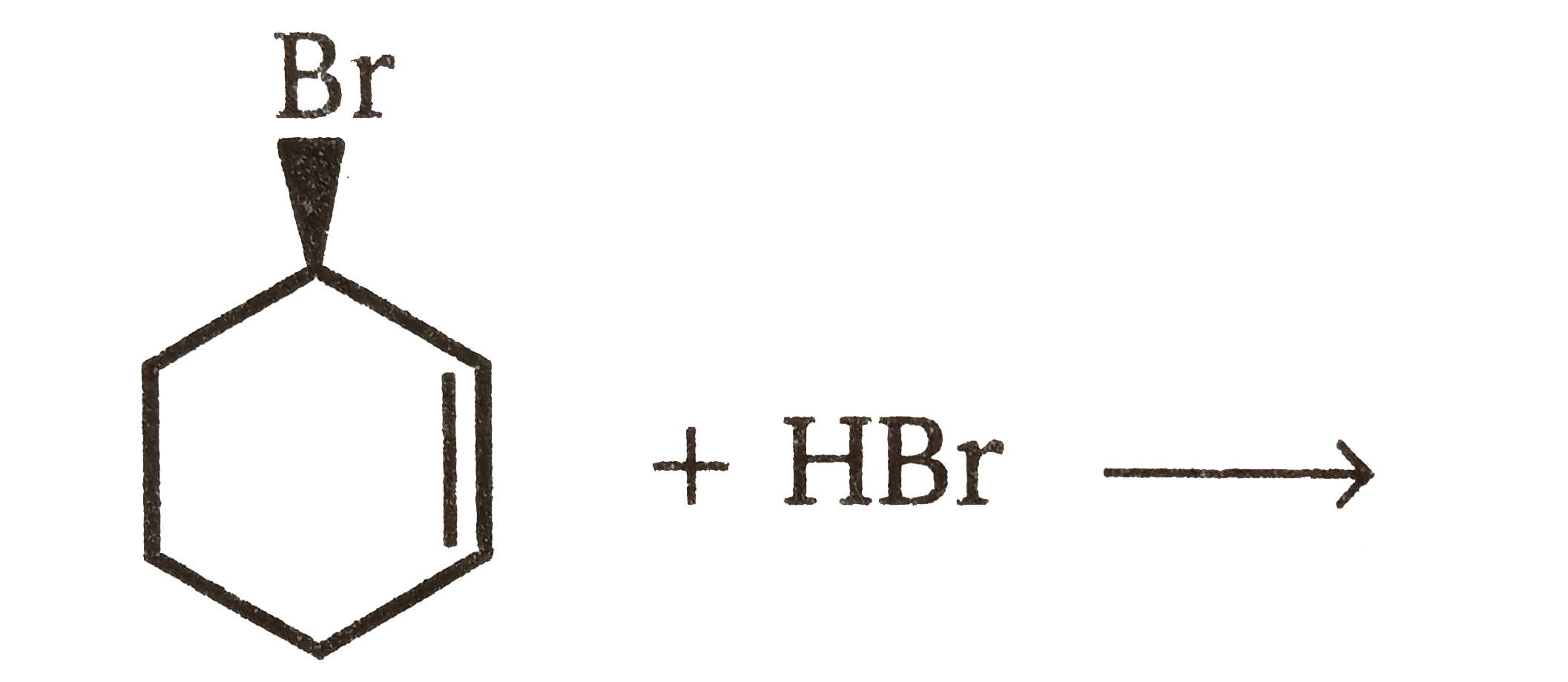
View SolutionThe following transformation involves a carbocation rearrangement. The carbocation is generated by potonation of the hydroxyl group by the lose of water. Which bond has to migrate in the carbocation to yield the product indicated (after the deprotonation) ?
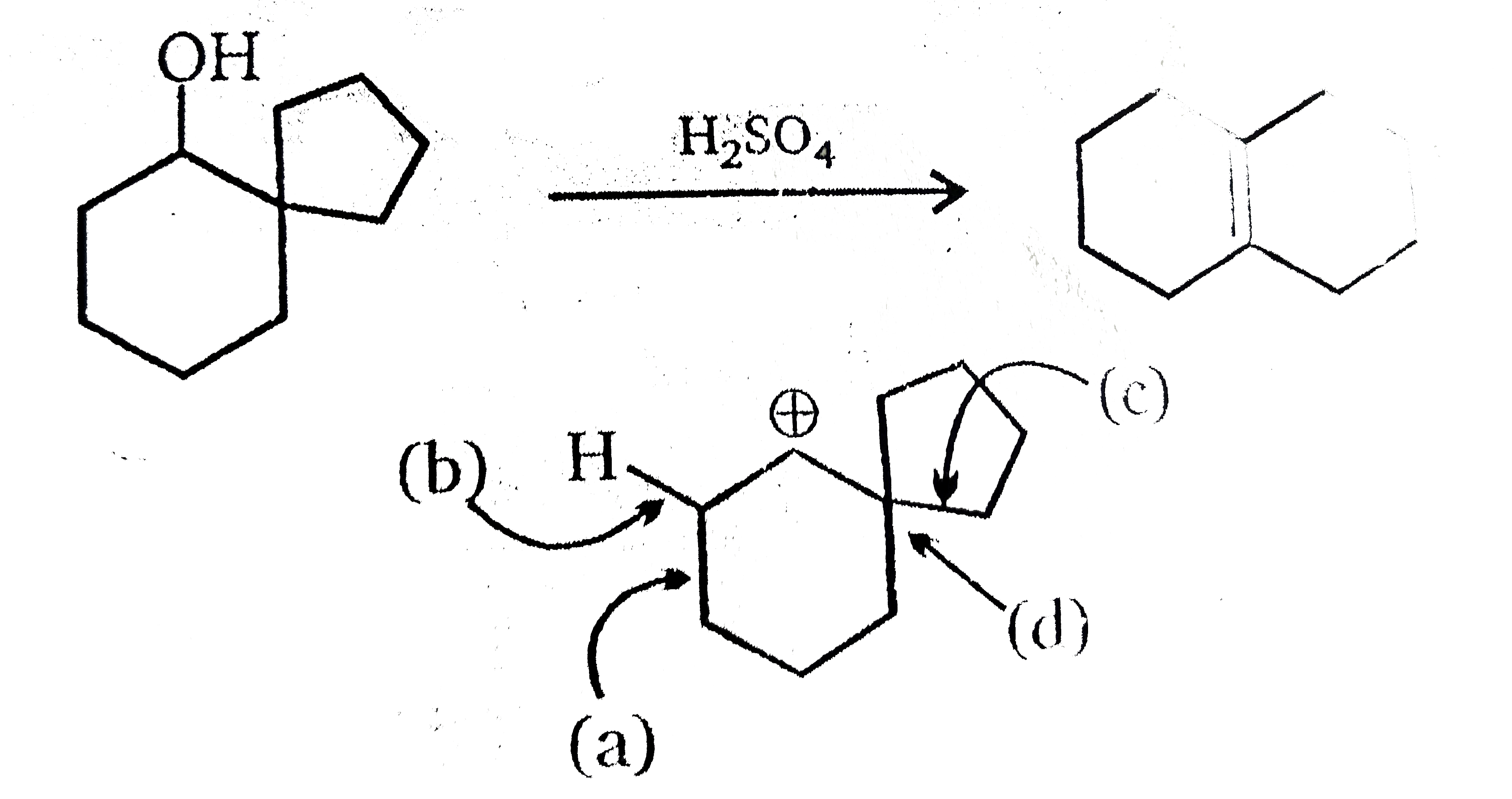
View SolutionUnder common reaction conditions, a carbocation rearranges to another carbocation of equal or greater stability. For example, a secondary carbocation will rearrange to a tertiary carbocation. It will not rearrange to a less stable primary carbocation. This generalization is not absolute, and because there is not a high energy barrier to the rearrangement of carbocations, rearrangement to a less stable cation can occur if it offers the chance to form a more stable product.
In which of the following cations rearrangement takes place?
View Solution



